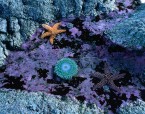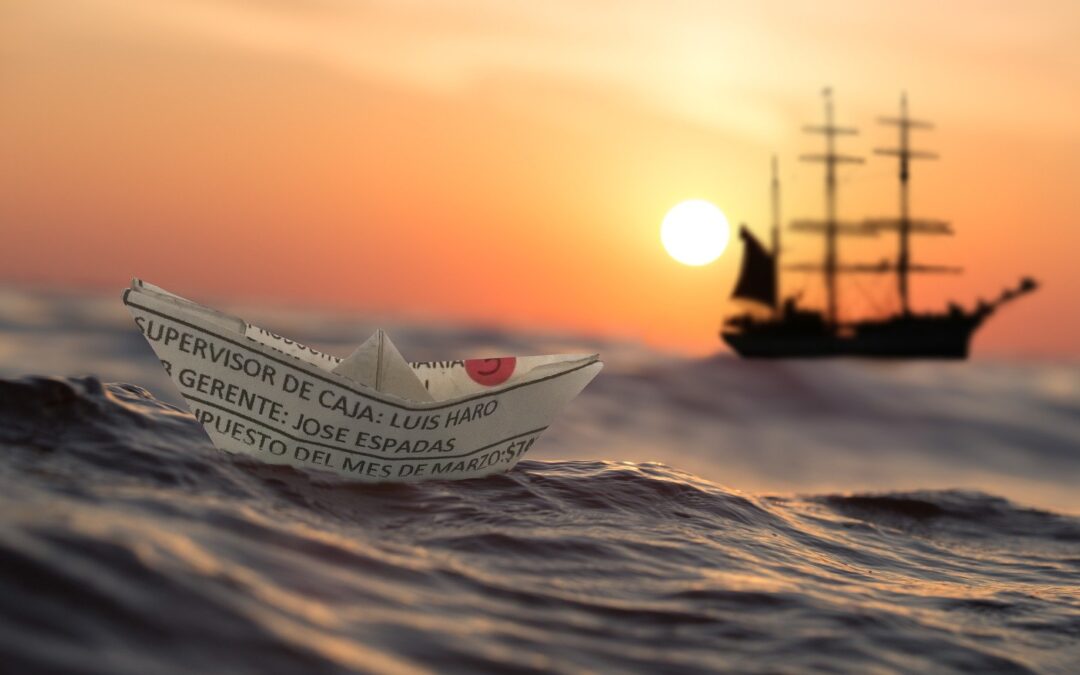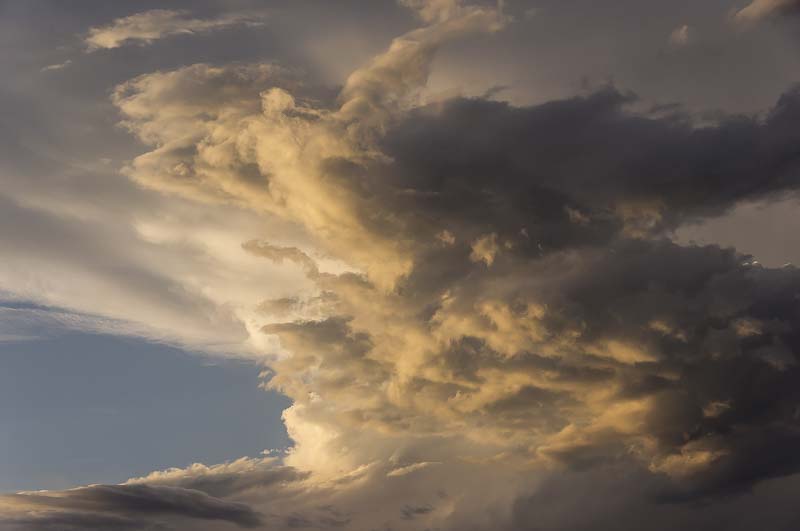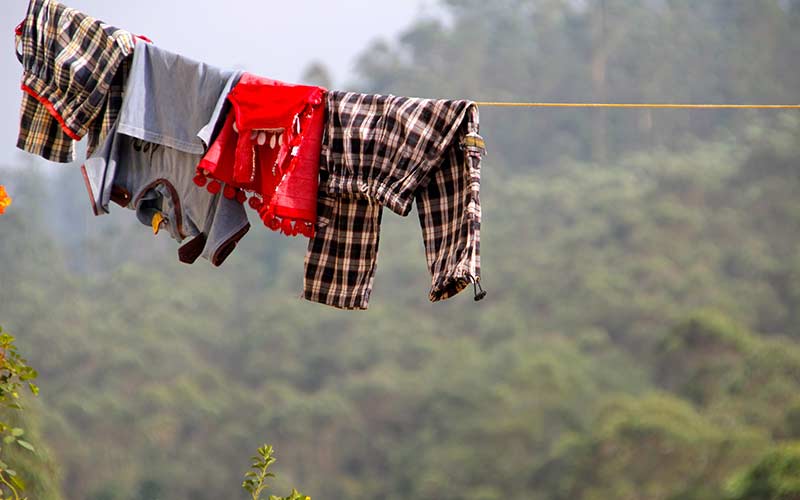Be sure to ask a lot of questions to get kids thinking and provide them with opportunities to ask their own questions as well. Depending on what your children already know about oceans, you might need to give them a quick overview before you begin talking about tide pools. Help them locate the oceans of the world on a globe or a map in comparison with where you live. If your family has been to the beach, ask your kids what they remember about the ocean.
Tides
Explain that the water in the ocean is constantly moving. Although it may be difficult for kids to grasp, you can explain how tides are caused by the force of gravity from the moon and the sun pulling on the ocean waters of the earth. When water moves up onto the beach we call it high tide and when it goes back down, we call it low tide. There are usually two high and two low tides each day.
What’s a Tide Pool?

When the high tide comes it brings water, plants, and animals with it. When the tide takes the water back out to the ocean (at low tide), some water gets trapped in low spots in rocks or sand on the beach. The trapped water forms a little pool called a tide pool that becomes a home for many ocean creatures and plants. Shores that have large rocks have the most tide pools, but sandy beaches sometimes have them too.
Some animals that live in tide pools are crabs, clams, mussels, barnacles, snails, urchins, anemones (say: uh-NEM-uh-neez), nudibranchs (say: NEW-dih-bronks), starfish (or seastars), and sea cucumbers. Occasionally, small fish or an octopus might find their way to a tide pool and plants such as algae, seaweed, and kelp also grow there. Show a picture or model of each animal as you talk about it. This tide pool animals site has information about common tide pool dwellers.
Surviving in a Tide Pool
A tide pool can be a very dangerous place to live. At high tide, waves come crashing onto the shore with very powerful force. The waves cover the pool with water and bring fresh seawater and more plants and animals for food, but then the tide goes out again (at low tide) and most of the water in the pool goes out with it. Then the sun beats down on the pool and starts to heat things up. Also, shore birds, like seagulls, like to eat many of the animals that live in tide pools. Introduce the terms prey and predator to your kids. The tide pool animals are prey to birds and the birds are predators of the smaller animals. There are also prey and predators within the tide pool.
So how do all of those creatures survive the many dangers of the tide pools they live in? Most animals have a way to defend themselves built into their bodies. Below are some examples; see if you and your kids can think of others.
Hide-n-Seek
One way to stay alive in a tide pool is to keep from being seen! Some animals, like an octopus, can change the color of their skin to blend in with their surroundings. This is called camouflage. A funny looking type of crab, called the decorator crab, attaches anemones, corals, and other things to its shell to disguise itself! (These crabs usually live in coral reefs, but can also be found in tide pools.) Other animals hide by burying themselves in the sand. Crabs often bury themselves so that only their eyes stick up – that way they can see their predators, but their predators can’t see them!
Hard As a Rock
Animals that live high on rocks, like barnacles and limpets, have very hard outer shells (called exoskeletons) that protect them from becoming dinner for hungry seagulls! They also store water and food inside their shells so they can stay alive even when they are not covered by water. Crabs also have exoskeletons that act like armor to protect their soft bodies. Snails and hermit crabs carry their protection on their backs, just like turtles. When things start looking dangerous, they can just pull into their shells for safety.
Hang On
What happens when the harsh waves from the incoming tide beat down on the animals? Don’t they get washed away? Barnacles, anemones, and starfish all have special sticky suction cup-type feet that they use to attach themselves to solid rocks so they won’t be washed away. In fact, once they stick to something, it is almost impossible to move them until they release themselves!
Fabulous Fact

Anemones are covered with sticky tentacles that they use to catch their food. Each tentacle can sting any animal it touches. The sting paralyzes the animal so it can’t move or defend itself and the anemone can eat it. Sometimes anemones are called flowers of the sea because they are so colorful. Even though they look like plants, they are actually animals. They have a stomach and a mouth, but no eyes or even a head. Some anemones can grow up to two feet across and live for up to 80 years!
Activity: Underwater Viewer
If you are planning a trip to the beach, have your kids make a viewer they can take with them and use to watch things living in the water. (You can also use this in a nearby pond.)
What You Need:
- 1 clean empty tin can (a small coffee can will work well)
- 1 gallon size plastic zip-lock bag
- 1 or 2 thick rubber bands that will fit tightly over the can
- Black paint (optional)
- Plastic waterproof tape (optional)
What You Do:
1. To make the viewer, use a can-opener to remove both ends of the can. Painting the inside of the can black will make it easier to see animals underwater.
2. Cut off the zipper and the three sealed sides of the plastic bag to make two sheets of plastic.
3. Place one piece of plastic over an end of the can and secure it with the rubber bands (throw the other piece away). Make sure to pull the plastic tightly over the rim of the can to make a smooth viewing surface.
4. Sealing the edges of the plastic above the rubber bands with waterproof tape will help keep water out of the viewer.
5. To use the viewer, stick the plastic-covered end into the water and look through the open end.
If you won’t be near a beach anytime soon, your kids might enjoy making their own tide pool. Fill a large container with water, add some large rocks, and then let your kids make models of tide pool creatures and plants out of waterproof clay to put in the pool.





